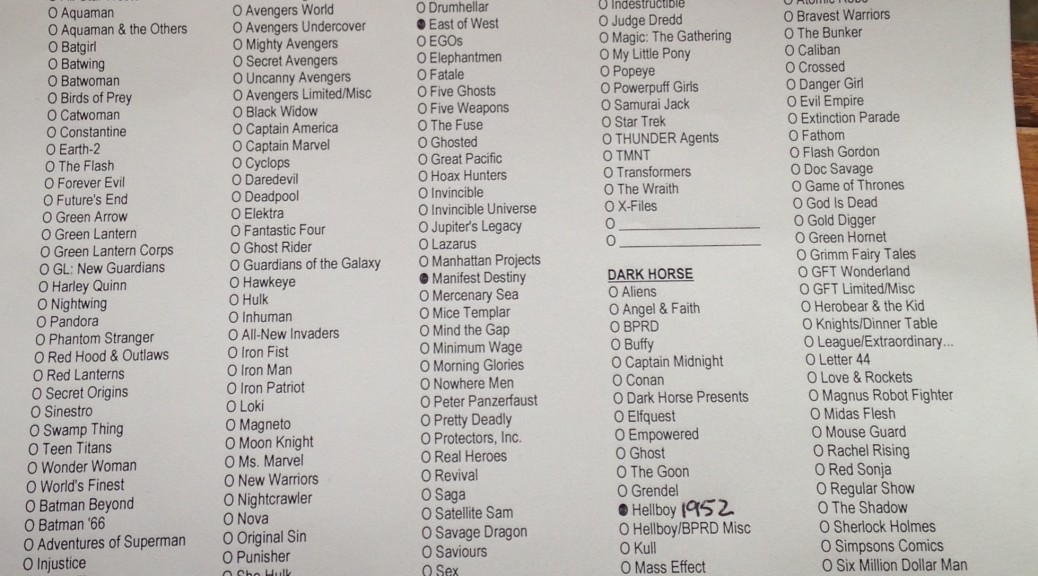Those who study comics are often avid consumers of the medium. How do I select comics for myself? I cannot read or afford everything. Nor is every comic equal in my eyes as an object of study. What does my list say about me? Or about comics today?
This post and my next outline my pull-list as an extension of my scholarly interests. These items suit my eclectic tastes, but they also identify several trends in recent publishing themes (especially from Image). I could say that the Gods Have Returned, but that seems overly simple. As A. David Lewis’ recently released American Comics, Literary Theory and Religion makes the case for the centrality of the superhero afterlife, I think there’s a broader case to be made for the emergence of religious themes as the narrative choice of the day. The gods have returned, yes, but we’re also going to hell (Hellboy in Hell), heaven/hell (The Life After), and bringing all of the spirits along for the ride (Wytches, Wayward, and Hexed). It’s a veritable Great Awakening out there, readers.
Here’s what my physical list looks like. It is surely missing at least another half-dozen titles I’m currently vetting for their pull-worthiness. This is from my local comic shop in Irvine, California:
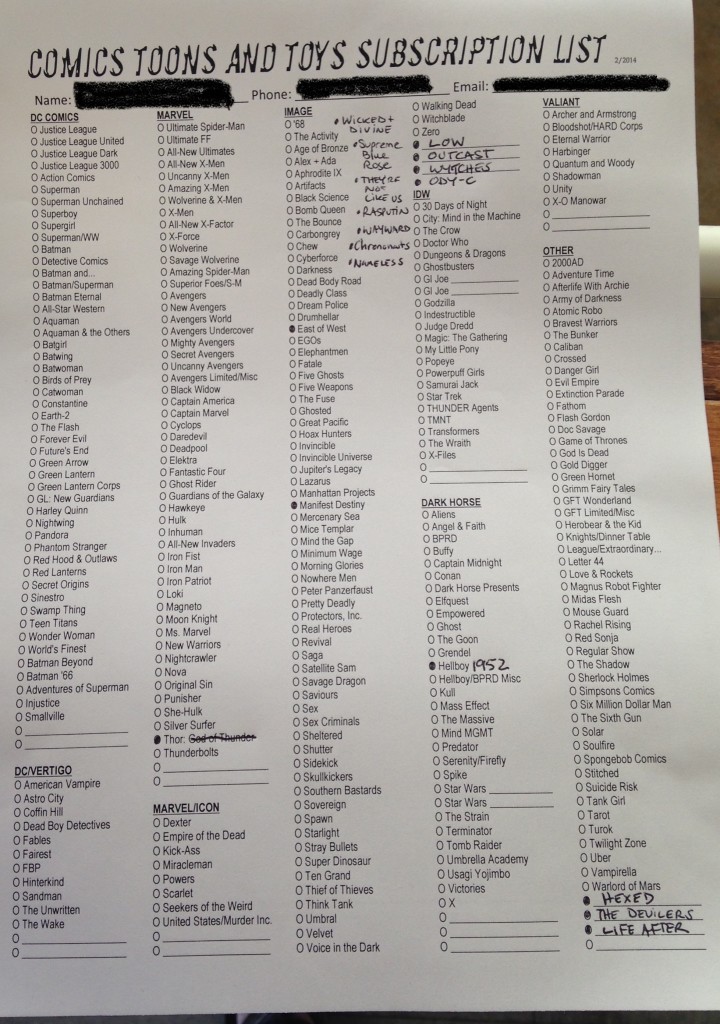
As you can tell, my love for Image’s title selection is literally overflowing. I shun the conventional superhero titles from DC and Marvel. (I read the latest Thor but I have recently dropped Ms. Marvel when it became apparent that her religious identity was becoming more gimmick than substance and when Marvel decided her character would be crossing over into multiple other titles.) For clarity this makes my list:
- Low
- East of West
- The Wicked + The Divine
- Manifest Destiny
- Supreme Blue Rose
- They’re Not Like Us
- Rasputin
- Wayward
- Chrononauts
- Nameless
- Hellboy: 1952
- Outcast
- Wytches
- Ody-C
- Hexed
- The Devilers
- The Life After
See if you can imagine what drives this diverse collection.
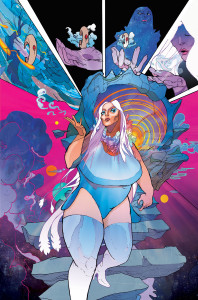
Is it myth? Certainly that’s one of the appeals of Ody-C, the gender-bending, space-faring, and lysergic retelling of Homer’s Odyssey by Matt Fraction. In The Wicked + The Divine, the ancient gods of the classical era are trapped in a 70 year cycle of reincarnation. It’s Andy Warhol’s Gods on Lady Gaga’s stage–and it’s awesome.
Is it supernaturalism? Wytches, The Devilers, Hexed, and Wayward depict out world filled with hauntings by non-human forces. I also cherish my copies of Lumberjanes but don’t pull it yet. Not every witch or magic comic gets my attention, but you can’t beat the pluralistic team of exorcists in Devilers. Wayward also has excellent historical essays about spirits in Japanese culture that easily make it one of the best titles for Religious Studies folks. And don’t forget The Life After where Jesus has returned and is stuck in limbo with Ernest Hemingway fighting a shake-up of the heavenly order. In that series God is a potato. No, I’m serious. Go check it out. The first TPB is a delight.
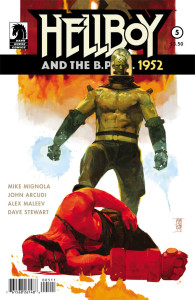
Is it gothicism? Hellboy and Nameless evoke H.P. Lovecraft’s maddening gods and set them in melanges of speculative fantasy that delights in the conventions of the pulp horror tradition. I like horror, what can I say? I want to be kept off-guard and unsettled by things that go bump in the night. Nameless is pulling that off for me in a massive way right now (as is Rat Gods, but that’s a limited 6 issue run.)
What about alternative history? Rasputin imagines the life of Grigori Yefimovich Rasputin as every bit the mystical dilettante that history has made of this enigmatic Russian. Manifest Destiny is a supernatural retelling of Lewis & Clark’s journey of exploration. I just picked up the first issue of Rebels last week, which is a re-telling of the American Revolution from the front-lines of Maine. It’s a great time to read if history’s your thing.
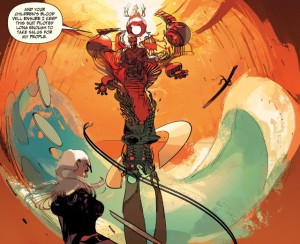
What about science fiction? Low is science fiction in vein the best of the early pulp swashbuckling tradition. It would be pirates in space if it were set underwater amid a dying civilization. Supreme Blue Rose is science fiction, I think. Like Chrononauts it seems to be about time travel (or inter-dimensional travel), but good luck summarizing it in a few words. I’ve dropped more SF titles than I kept recently. There seems to be an abundance of spaghetti space westerns right now. Perhaps I’ll return to the best of the bunch when it is clearer what they are. This section of my list could easily be 10 titles right now.
Superheroes? Thor counts. I’ve also got my eye on the re-boot of Secret Six while I read They’re Not Like Us, which seems so much like some version of the Charles Xavier’s X-Men academy without civility or restraint. Ms. Marvel was excellent–and continues to be so as far as I can tell. Perhaps I’ll become a TPB consumer of that series. Apart from that I’ve been disappointed in recent superhero items. Convergence? Pass. Magneto started strong and then faded quickly as it begun to tie in to other titles. There’s a spider-glut right now that I can’t abide. Batman, too, although I will definitely pick up Gotham Academy in TPB.
Where would you draw the lines? How would you sketch the intersections? What boxes do these fit into? What do you see?
Share your lists if you have them!
